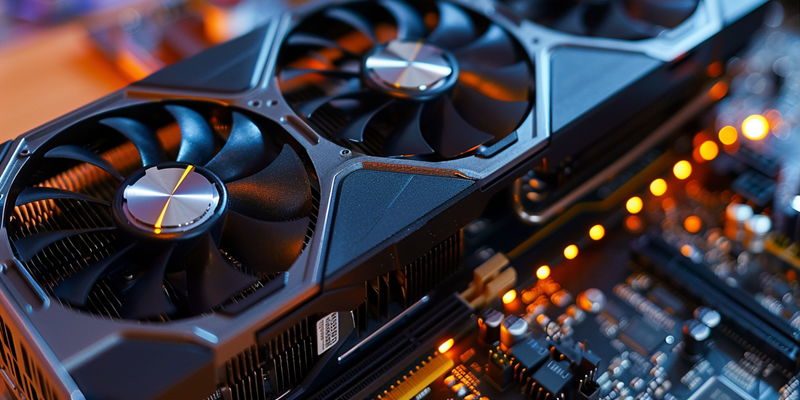Samsung is set to revolutionize gaming technology with its newly announced GDDR7 memory. This advanced memory promises to deliver unprecedented efficiency and speed, propelling graphics processing into a new era. With ever-evolving gaming demands, the need for faster, more efficient memory is critical. GDDR7 aims to meet these needs, providing the bandwidth and processing capabilities necessary for the most immersive gaming experiences yet.
The introduction of GDDR7 by Samsung marks a significant milestone for gamers and tech enthusiasts alike. This state-of-the-art memory will ensure that upcoming gaming hardware can keep pace with the complex graphics and high-performance requirements of future gaming titles. It’s an exciting development that underscores the continual growth and innovation in gaming hardware, attesting to the industry’s commitment to pushing the boundaries of what’s possible. As a result, gamers worldwide can look forward to a new level of gameplay realism and smoothness, with GDDR7 laying the foundation for the future of gaming graphics.
Next-Generation GDDR7 Unleashed
A Staggering Advancement in Speed
Samsung’s groundbreaking GDDR7 memory ushers in a new era for graphics memory with unparalleled specifications. Boasting a capacious 16GB density enabling 2GB for each memory module and a robust 2-bit interface, this GDDR7 technology is set to revolutionize graphics processing capabilities. Its 32Gbps variant is poised to turbocharge future high-end graphics cards, potentially including Nvidia’s highly anticipated RTX 5080 and 5090 series, offering performance that vastly surpasses current GDDR6 standards. Meanwhile, its 28Gbps version strikes an exquisite balance between efficiency and power, making it an attractive option for the RTX 5060 and 5070 series, targeting users seeking high performance without the steeper price tag. These advancements promise to deliver unparalleled graphics experiences, catering to both ends of the consumer market.
Facilitating Elevated Gaming Standards
The leap in performance with the new graphics technology is remarkable, showcasing a sizeable 42% enhancement for the upcoming 32Gbps variant and a 28% increase for the 28Gbps model when compared to the RTX 4080 Super’s 22.5Gbps GDDR6 memory capabilities. These advancements are not just for show on technical specifications but are essential to meet the increasing demands of contemporary PC gaming for memory. The shift sets a new standard for VRAM, no longer settling for less than 16GB—indicative of the growing expectations from gamers. Such development isn’t minor; it signifies a major shift in norms for what’s considered acceptable in the performance of mid-range and top-tier gaming graphics cards, effectively pushing the industry forward in terms of technical expectations and gaming experience. This step towards more robust VRAM allocations aligns with the needs of advanced gaming environments, ensuring smoother, more detailed gameplay.
Implications for the Gaming Hardware Sector
Shifting the Performance Paradigm
The advent of GDDR7 marks a significant leap forward for the gaming industry. This new technology is not a mere step forward but a giant leap that promises to massively enhance performance. Designed to work in concert with the latest GPUs, GDDR7 memory will raise the bar for graphical prowess, particularly in areas demanding intense graphic processing like 3D rendering and smooth 4K gaming at high frame rates.
With GDDR7, gamers can expect a future where graphics rendering is so powerful that memory bandwidth limitations will no longer hinder performance. The introduction of the 266 FBGA packaging is another boon, ensuring these high-performance memory chips meet the necessary thermal and space requirements crucial in today’s top-end gaming hardware. This represents a paradigm shift, setting the stage for a new era of gaming where visual fidelity and performance are pushed to new heights, making the gaming experience more immersive than ever before.
Answering the VRAM Demand Curve
As PC games continue their relentless march towards greater graphical fidelity and computational complexity, the need for robust and agile VRAM becomes undeniably critical. GDDR7 arrives as the answer to this growing demand, anticipated to set a new precedent in VRAM performance. This is a pivotal moment for enthusiasts and the industry alike, as the stakes for delivering immersive and fluid gaming experiences have never been higher. The implications of this evolution extend beyond the gaming world, with potential benefits spilling over into professional creative applications that rely on substantial and speedy VRAM for content creation, video editing, and complex computations.
In sum, Samsung’s GDDR7 memory is not just a new product; it embodies a tangible leap towards realizing the future of VRAM — faster, stronger, and equipped to drive the next generation of gaming and professional graphics solutions forward.

